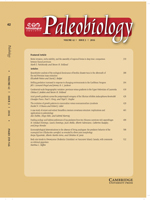Biotic invasions in the fossil record provide natural experiments for testing hypotheses of niche stability, speciation, and the assembly and diversity of regional biotas. We compare ecological parameters (preferred environment, occupancy, median abundance, rank abundance) of genera shared between faunal provinces during the Richmondian Invasion in the Late Ordovician on the Laurentian continent. Genera that spread from one faunal province to the other during the invasion (invading shared genera) have high Spearman rank correlations (>0.5) in three of four ecological parameters, suggesting a high level of niche stability among invaders. Genera that existed in both regions prior to and following the invasion (noninvading shared genera) have low correlations (<0.3) and suggest niche shift between lineages that diverged at least 8 Myr earlier. Niche shift did not accumulate gradually over this time interval but appears to have occurred in a pulse associated with the onset of the Taconic orogeny and the switch from warm-water to cool-water carbonates in southern Laurentia.
How to translate text using browser tools
28 April 2016
Biotic Invasion, Niche Stability, and the Assembly of Regional Biotas in Deep Time: Comparison between Faunal Provinces
Mark E. Patzkowsky,
Steven M. Holland
ACCESS THE FULL ARTICLE

Paleobiology
Vol. 42 • No. 3
Summer 2016
Vol. 42 • No. 3
Summer 2016




